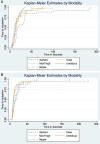Impact of bed angle and height on intubation success during simulated endotracheal intubation in the ramped position
- PMID: 33000040
- PMCID: PMC7493484
- DOI: 10.1002/emp2.12035
Impact of bed angle and height on intubation success during simulated endotracheal intubation in the ramped position
Abstract
Objective: The ramped position is often used during endotracheal intubation to improve oxygenation, improve laryngeal views, and reduce airway complications. We sought to compare the impact of ramp angle and bed height on intubation outcomes during simulated endotracheal intubation.
Methods: We enrolled emergency medicine residents and fourth-year medical students to perform simulated direct laryngoscopy and endotracheal intubation in random order with the mannequin in the following combinations of ramp angles and bed heights; ramp angles of 25° and 45° at bed heights including knee, mid-thigh, umbilicus, xiphoid, and nipple/intermammary fold. Our primary outcome was the reported percentage of glottic opening (POGO) score. Secondary outcomes included number of laryngoscopy attempts and intubation time.
Results: We enrolled 25 participants. There was no difference in reported POGO scores at 25° between bed heights, but at 45°, the umbilicus bed height had an improved reported POGO score (20; 95% confidence interval [CI] 7-33, P < 0.01) relative to xyphoid. The nipple/inframammary fold height required longer intubation times in seconds (mean difference [MD] 95% CI) at 25°, (MD, 23.9 [4.6-37.6], P < 0.01) and more laryngoscopy attempts at 45° (MD, 0.48 [0.16-0.79], P < 0.01) relative to xyphoid. There was no difference in laryngoscopy attempts and video POGO between 25° and 45° at all bed heights, but reported POGO at the umbilicus position was better at 25° than 45° (12 [1-23], P = 0.03).
Conclusion: The umbilicus bed height resulted in the highest reported POGO at 45°. Nipple/inframammary fold height resulted in worse intubating conditions.
Keywords: airway management; hypoxia; intratracheal; intubation; laryngoscopy; position; respiratory insufficiency; simulation.
© 2020 The Authors. JACEP published by Wiley Periodicals, Inc. on behalf of American College of Emergency Physicians.
Conflict of interest statement
The authors have no conflicts of interest.
Figures
References
-
- Mort T. The incidence and risk factors for cardiac arrest during emergency tracheal intubation: a justification for incorporating the ASA Guidelines in the remote location. J Clin Anesth. 2004;16(7):508‐516. - PubMed
-
- Heffner AC, Swords DS, Neale MN, Jones AE. Incidence and factors associated with cardiac arrest complicating emergency airway management. Resuscitation. 2013;84(11):1500‐1504. - PubMed
-
- Ibanez J, Raurich JM. Normal values of functional residual capacity in the sitting and supine positions. Intensive Care Med. 1982;8(4):173‐177. - PubMed
-
- Hoste EA, Roosens CD, Bracke S, et al. Acute effects of upright position on gas exchange in patients with acute respiratory distress syndrome. J Intensive Care Med. 2005;20(1):43‐49. - PubMed
-
- Richard JC, Maggiore SM, Mancebo J, Lemaire F, Jonson B, Brochard L. Effects of vertical positioning on gas exchange and lung volumes in acute respiratory distress syndrome. Intensive Care Med. 2006;32(10):1623‐1626. - PubMed
LinkOut - more resources
Full Text Sources
Other Literature Sources


